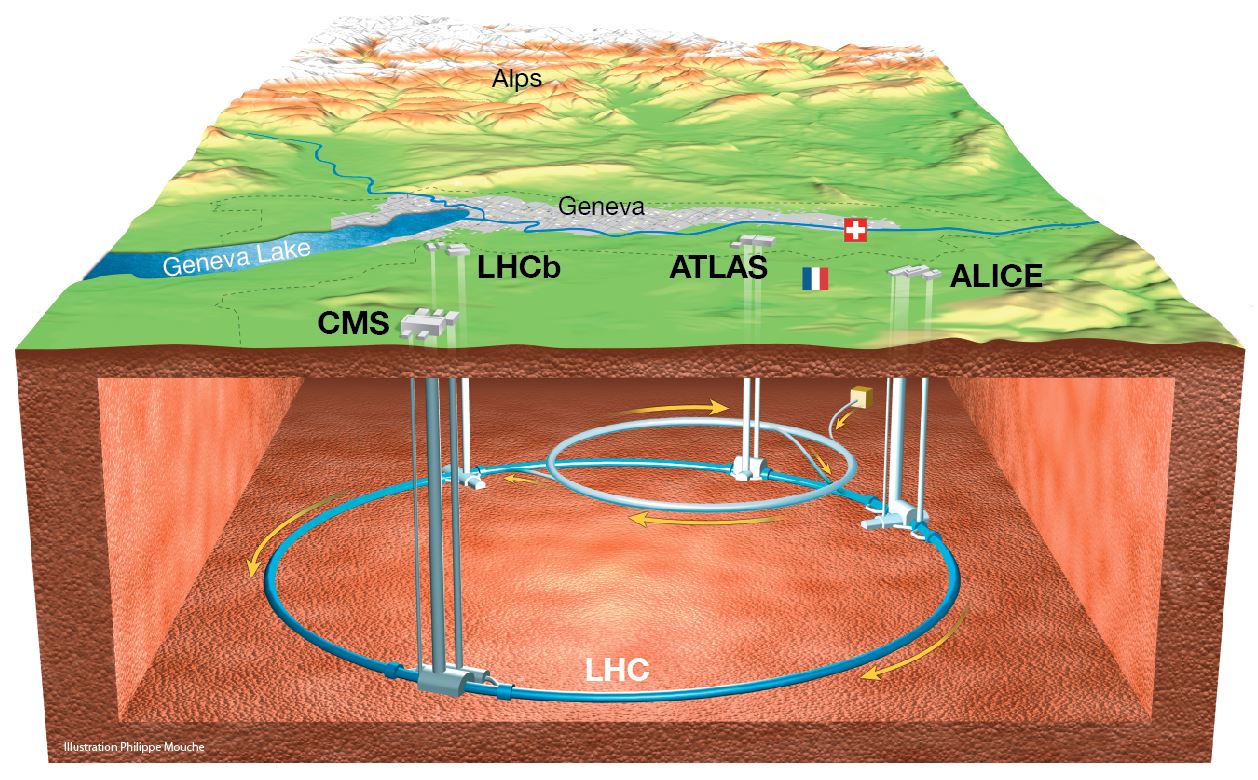Detecting Particles
You’ve seen “jet trails” in the sky—those long, straight clouds that form behind jet aircraft flying at high altitudes. The trails are much larger than the aircraft and may be visible even when the jet itself is too far away to see. Something similar happens when a charged particle (e.g. an alpha or beta particle) travels through alcohol vapor. As the particle zooms past air molecules, it strips off some of their electrons, turning them into charged ions. The alcohol vapor condenses into droplets around these ions, forming a condensation trail along the path where the charged particle traveled. In order for this to work, the alcohol vapor must be supersaturated, which means that there are more alcohol molecules in the air than the air can hold, so the alcohol readily condenses into droplets at the first opportunity. A few alcohol molecules will stick to a charged ion, forming a tiny droplet which quickly grows larger as more and more alcohol molecules bump into it and stick together.
In this video, alpha particle tracks can be seen emanating from a pebble of the mineral autunite, which contains the radioactive element uranium. Uranium-238 decays into thorium-234, emitting an alpha particle.
This phenomenon provides one of the simplest means of observing subatomic particles. A cloud chamber is a device in which charged particles can be detected by observing the condensation trails they form as they travel through alcohol vapor, or sometimes water vapor. (Want to build one yourself? Check out this youtube video for instructions.) The first particle of antimatter ever detected—the positron—was discovered using a cloud chamber, as we’ll see on the next page.
Elaborate devices called particle accelerators are also used to study elementary particles. There are numerous types of particle accelerators, and they operate in different ways, but the basic idea is that subatomic particles are accelerated to high speeds and then slammed into each other to produce a spray of debris that can be studied. The largest and most powerful particle accelerator is the Large Hadron Collider (LHC), located near Geneva, Switzerland. More than 10,000 scientists and engineers from over 100 countries collaborated to construct the LHC, which is operated by the European Organization for Nuclear Research (also known by its French name, “Conseil Européen pour la Recherche Nucléaire,” or CERN).

The largest part of the LHC apparatus is a tunnel 17 miles in circumference, straddling the borders of France and Switzerland. This gigantic tunnel was constructed more than 500 feet underground to shield its particle detectors from cosmic radiation that might interfere with the measurement results. Electric and magnetic fields are used to accelerate protons around this 17-mile tunnel, gradually increasing their speed until they are travelling roughly 99.999999% the speed of light. Source: The LHC faq/guide. See here for more details about the calculation. (That’s about as fast as anything can ever go, because—as we’ll discuss in the next chapter—it is physically impossible to accelerate any object beyond the speed of light.) Steered by powerful electromagnets, some of the protons travel clockwise around the tunnel, while others travel counterclockwise. The protons are then made to collide head-on, producing a spray of debris that is tracked by enormous particle detectors located around the tunnel.
The spray of debris generated in these collisions doesn’t all come from within the protons themselves, however. When the protons collide, some of their kinetic energy is converted into brand new particles that did not exist prior to the collision! (As we’ll see in chapters 6 and 7, particles seem to be made of energy.) These new particles come flying out of the LHC tunnel and into particle detectors, which track their paths to measure various properties of the particles, e.g. by measuring how their paths curve in electric and magnetic fields. Most of the particles produced and detected in the Large Hadron Collider are composite particles (particles comprised of more than one elementary particle), and most of them are unstable, quickly decaying into less exotic particles. But numerous elementary particles have also been detected and studied in this way.
Tremendous volumes of data (about 700 megabytes per second, according to the official brochure) from the LHC detectors are analyzed by supercomputers, which are programmed to look for patterns predicted by the Standard Model. So far, the Standard Model has proven remarkably successful. But don’t get too attached to it. Most physicists think the model is probably incorrect, for reasons that will be discussed in chapter 7.